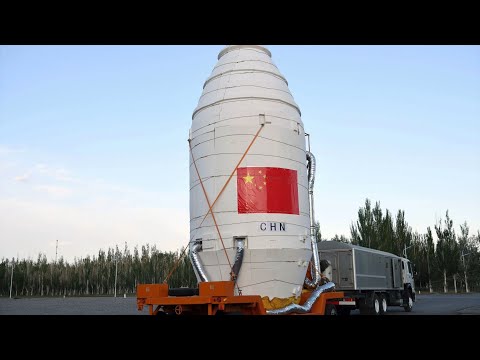7 * 24
多渠道服务支持

HELSINKI — China carried out its ninth launch of the month early Thursday, sending the secretive Shijian-26 spacecraft into orbit.
A Long March 4B rocket lifted off at 12:12 a.m. Eastern (0412 UTC) May 29 from Jiuquan Satellite Launch Center, northwest China. Insulation tiles fell away from the rocket’s payload fairing as it climbed into a cloudy sky.
The Shanghai Academy of Spaceflight Technology (SAST), which provided the Long March 4B for the mission, declared success of the launch within an hour of liftoff.
SAST revealed the previously-unknown payload for the mission to be the experimental Shijian-26. No images or details of the spacecraft were provided.
The satellite is mainly used for national land surveys, environmental management, and other fields, providing information services to support national economic development, according to Chinese state media.
Shijian-26 was jointly developed by the Dongfanghong Satellite company under the China Academy of Space Technology (CAST), the Harbin Institute of Technology (HIT), and the Changchun Institute of Optics, Fine Mechanics and Physics (CIOMP) under the Chinese Academy of Sciences (CAS).
The involvement of the latter suggests remote sensing capabilities, while the absence of imagery and specific capabilities, along with the involvement of institutions with dual-use technology expertise, suggests possible classified or military-related applications.
Shijian is a series of satellites used to conduct experiments and test new technologies. The previous mission, Shijian-25, launched in January to test on-orbit refueling and mission extension technologies, following on from the Shijian-21 mission which towed a defunct satellite into a graveyard orbit.
Other notable missions include the retrievable Shijian-19 science satellite, the 8,000-kilogram Shijian-20 , and Shijian-17, which demonstrated maneuverability around the geostationary belt and conducted proximity operations.
Accelerating launch activity
The Shijian-26 mission followed just hours after a vertical takeoff and splashdown test by Sepoch, and the launch of the Tianwen-2 near Earth asteroid sample return and comet rendezvous mission from Xichang.
The Tianwen-2 spacecraft was successfully sent into a heliocentric orbit and began a roughly year-long voyage to asteroid Kamoʻoalewa, a quasi-satellite of the Earth.
The mission was performed under a deal of secrecy, despite being an exploration mission. The launch was not broadcast live, and no images of the spacecraft itself have been published, suggesting a potentially sensitive aspect to the sampling mission.
Tianwen-2 is an exploration mission, but it has been treated with a great deal of secrecy. The launch was not broadcast live, and we have not seen the actual spacecraft (unlike Tianwen-1). We have only a few renders of Tianwen-2, which is now in heliocentric orbit.
China’s previous mission saw the return-to-flight of the Kinetica-1 (Lijian-1) solid propellant rocket from CAS Space, a commercial launch arm of CAS, following a launch failure late last year. The rocket lifted off from Jiuquan at 12:05 a.m. Eastern (0405 UTC) May 21.
The launch carried six satellites—the optical Taijing-3 (04) and synthetic aperture radar Taijing-4 (02A) satellites for Minospace, along with the multispectral imaging satellite Xingrui-11, Xingjiyuan-1 intelligent satellite for Shanghai Guoyu Zhilian Aerospace Technology Co., Ltd, the 12U Cube-108-001 with a GNSS occultation detector payload for Beijing FutureSpace Space Technology Institute, and Xiguang-1 (02) for Xiopm Space, carrying a multispectral payload.
The trio of launches takes China to a total of 32 orbital launch attempts for the year. It was the ninth orbital launch of the month, indicating an acceleration in Chinese launch cadence. China has not publicly released its launch plans for 2025, but could be targeting around 100 launches.

特别声明: 本文版权归原作者所有,本文所用图片、文字如涉及作品版权,请第一时间联系我们删除。本平台旨在提供行业资讯,不代表本站立场!
Notice: The copyright of this article belongs to the original author. If the pictures and text used in this article involve the copyright of the work, please contact us to delete the first time. This platform is intended to provide industry information and does not represent the position of this site